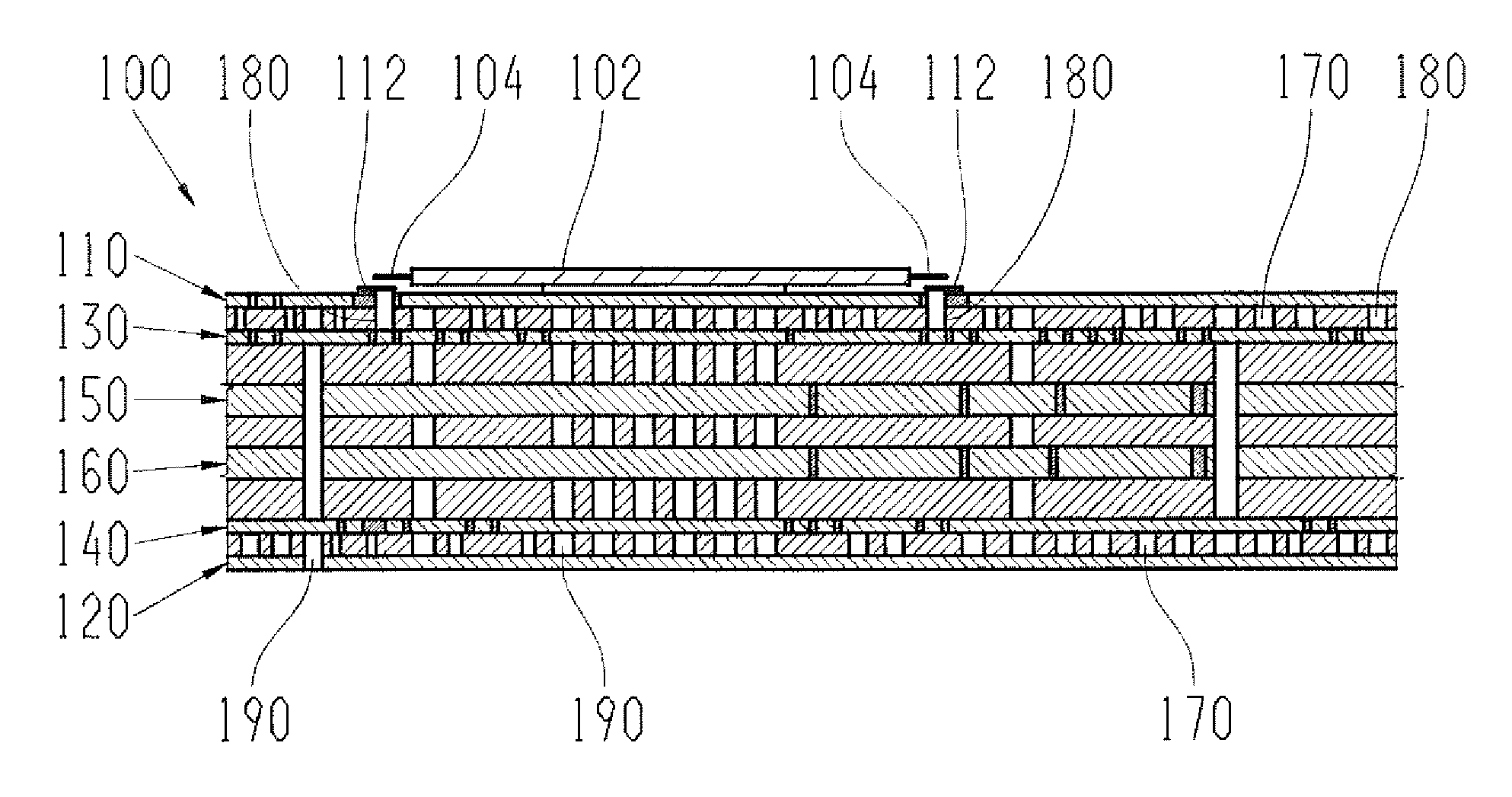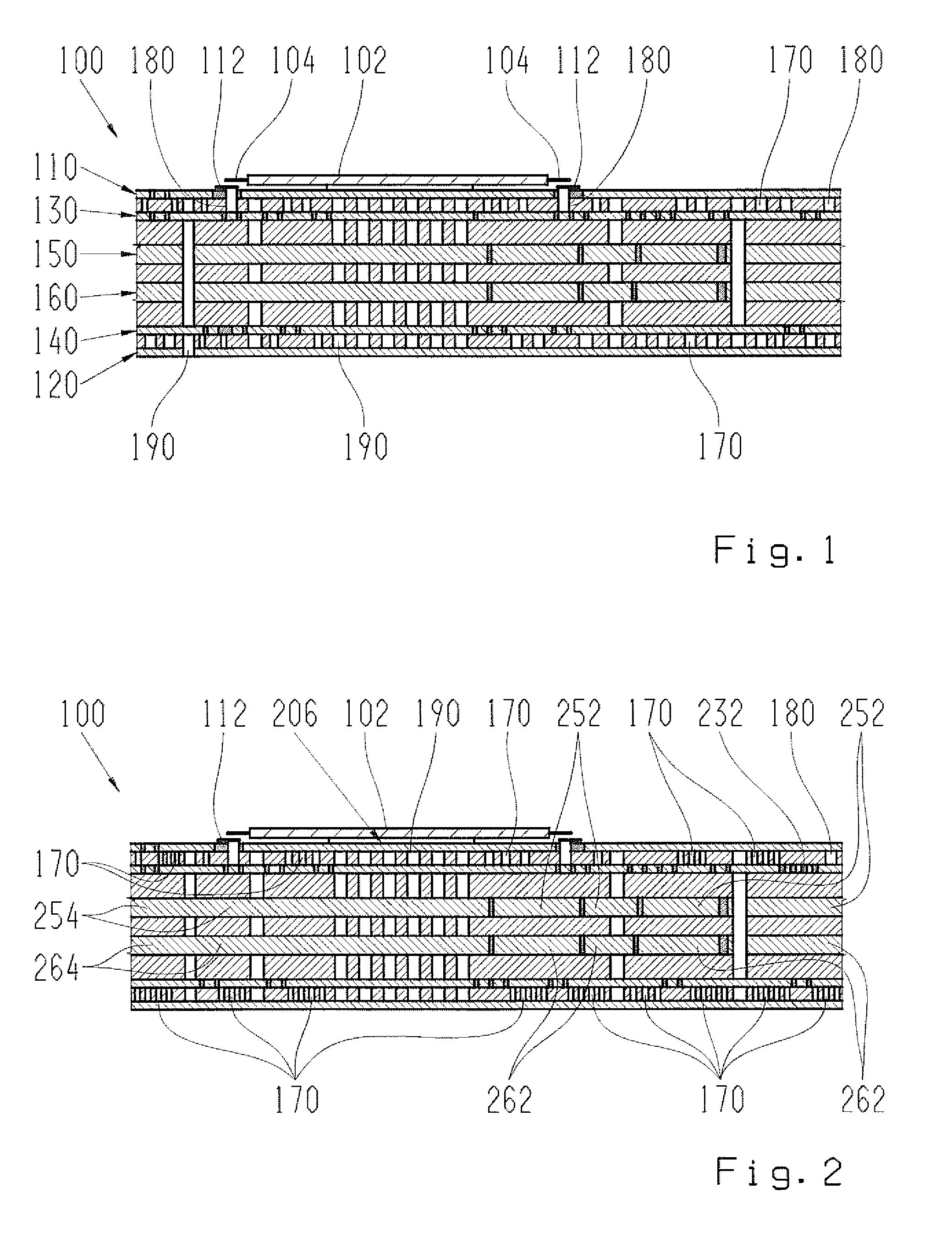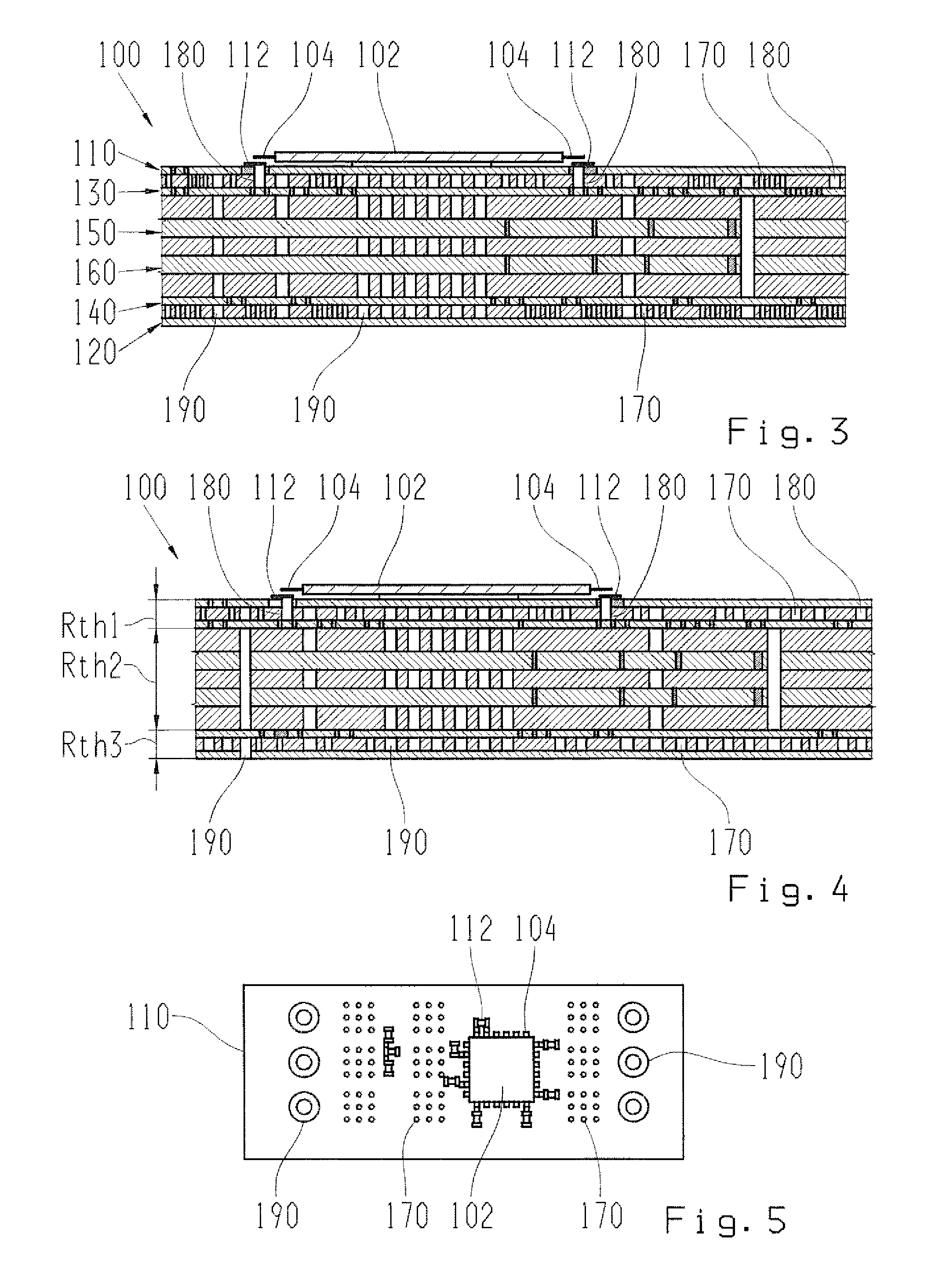Printed circuit board and control device for a vehicle transmission comprising the printed circuit board
a technology of printed circuit board and control device, which is applied in the direction of printed circuit parts, electrical apparatus casings/cabinets/drawers, connectors and pcb, etc., can solve the problems of low unit cost and uncomplicated bonding technology, and achieve the effect of reducing the overall thermal resistance of the printed circuit board, facilitating further dissipation, and thick supply voltage areas
- Summary
- Abstract
- Description
- Claims
- Application Information
AI Technical Summary
Benefits of technology
Problems solved by technology
Method used
Image
Examples
Embodiment Construction
[0031]Reference will now be made to embodiments of the invention, one or more examples of which are shown in the drawings. Each embodiment is provided by way of explanation of the invention, and not as a limitation of the invention. For example features illustrated or described as part of one embodiment can be combined with another embodiment to yield still another embodiment. It is intended that the present invention include these and other modifications and variations to the embodiments described herein.
[0032]In the following description of the preferred embodiments of the present invention, elements shown in the various figures and elements having similar effects use the same or similar reference signs, whereas a repeated description of these elements is omitted.
[0033]FIG. 1 shows a printed circuit board 100 in accordance with an embodiment of the present invention. Thereby, a section view of the printed circuit board 100 is shown in FIG. 1. The printed circuit board 100 is equip...
PUM
 Login to View More
Login to View More Abstract
Description
Claims
Application Information
 Login to View More
Login to View More - R&D
- Intellectual Property
- Life Sciences
- Materials
- Tech Scout
- Unparalleled Data Quality
- Higher Quality Content
- 60% Fewer Hallucinations
Browse by: Latest US Patents, China's latest patents, Technical Efficacy Thesaurus, Application Domain, Technology Topic, Popular Technical Reports.
© 2025 PatSnap. All rights reserved.Legal|Privacy policy|Modern Slavery Act Transparency Statement|Sitemap|About US| Contact US: help@patsnap.com



